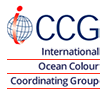The IOCCG bibliography is updated periodically when new references are submitted by readers, especially references that are published open access. Another useful ocean colour bibliography is the searchable Historic Ocean Colour Archive assembled by Marcel Wernand, with articles and books written between the 17th and early 20th century.
If you would like to submit a peer-reviewed open access publication to be included in the Ocean Colour Bibliography, please send the reference to Raisha Lovindeer using the following format: Lastname1, Initials1., Lastname2, Initials2., etc. (DATE). Full title of publication, Journal Abbreviation, Volume, Page numbers, DOI as a link. Please also check that the reference is not already in the database (search by first author). It is not necessary to send the PDF file as an attachment. Note that only peer-reviewed articles will be accepted.
If you would like to view recently-published papers, enter the current year in “Search by Keyword”. You can also search the database using keywords or the author’s last name. For papers dealing with Remote Sensing of Marine Litter and Debris, use the keyword “RSMLD”. You can also view the Datasets Bibliography for remote sensing and marine litter and debris.
Bibliography
Kutser, T., D. C. Pierson, K. Kallio, A. Reinart, S. Sobek (2005). Mapping lake CDOM by satellite remote sensing. Remote Sensing of Environment, 94: 535-540.
Kutser, T., D. C. Pierson, L. Tranvik, A. Reinart, S. Sobek, K. Kallio (2005). Estimating the colored dissolved organic matter absorption coefficient in lakes using satellite remote sensing, Ecosystems, 8: 709-720.
Kutser, T., E. Vahtmäe, C.M. Roelfsema, L. Metsamaa (2007) Photo-library method for mapping seagrass biomass. Estuarine, Coastal and Shelf Science, 75: 559-563.
Kutser, T., E. Vahtmäe, G. Martin (2006). Assessing suitability of multispectral satellites for mapping benthic macroalgal cover in turbid coastal waters by means of model simulations. Estuarine Coastal and Shelf Science, 67: 521-529.
Kutser, T., E. Vahtmäe, L. Metsamaa (2006). Spectral library of macroalgae and benthic substrates in Estonian coastal waters. Proceedings of the Estonian Academy of Sciences. Biology.Ecology, 55: 329-340.
Kutser, T., Herlevi, A., Kallio, K., Arst, H. (2001). A hyperspectral model for interpretation of passive optical remote sensing data from turbid lakes. The Sci. of the Tot. Env. (268) 47-58.
Kutser, T., I. Miller, D.L.B. Jupp (2006). Mapping coral reef benthic substrates using hyperspectral space-borne images and spectral libraries. Estuarine Coastal and Shelf Science, 70: 449-460.
Kutser, T., L. Metsamaa, A.G. Dekker, (2008). Influence of the vertical distribution of cyanobacteria in the water column on the remote sensing signal. Estuarine, Coastal and Shelf Science, 78: 649-654.
Kutser, T., L. Metsamaa, E. Vahtmäe, N. Strömbeck (2006). On suitability of MODIS 250 m resolution band data for quantitative mapping cyanobacterial blooms. Proceedings of the Estonian Academy of Sciences. Biology Ecology, 55: 318-328.
Kutser, T., L. Metsamaa, N. Strömbeck, E. Vahtmäe (2006). Monitoring cyanobacterial blooms by satellite remote sensing. Estuarine Coastal and Shelf Science, 67: 303-312.
Kutser, T., M. Hiire, L. Metsamaa, E. Vahtmäe, B. Paavel, R. Aps (2009). Field measurements of spectral backscattering coefficient of the Baltic Sea and boreal lakes. Boreal Environment Research, 14: 305-312.
Kutser, T., Tranvik, L., Pierson, D.C. (2009). Variations in colored dissolved organic matter between boreal lakes studied by satellite remote sensing. Journal of Applied Remote Sensing, , 3:033538, doi:101117/1.3184437.
Kwiatkowska, E. J. (2003). Application of machine-learning techniques toward the creation of a consistent and calibrated global chlorophyll concentration baseline dataset using remotely sensed ocean color data. IEEE Trans. Geosci. Remote Sens. 41: 2844-2860.
Kwiatkowska, E.J., and Fargion, G.S. (2002). Merger of ocean color data from multiple satellite missions within the SIMBIOS project. SPIE Proceedings, 4892: 168-182.
Kyewalyanga, M., Platt, T. and Sathyendranath, S. (1992). Ocean primary production calculated by spectral and broad-band models. Mar. Ecol. Prog. Ser. 85: 171-185.
Lahet F., and S Ouillon and P. Forget. (2001). Application of a colour classification method to quantify the constituents of coastal waters from satellite-like sampled reflectances, International J. Rem. Sens., 22(5): 909-914.
Lahet F., Ouillon S., Forget P. (2001). Colour classification of coastal waters of Ebro river plume from spectral reflectances. Int. J. Rem. Sens., 22(9): 1639-1664.
Lahet, F., Ouillon, S., and Forget, P. (2000). A three-component model of ocean color and its application in the Ebro River mouth area. Remote Sens. Environ. 72: 181-190.
Lai, W., Lee, Z., Wang, J., Wang, Y., Garcia, R., Zhang, H. (2022). A Portable Algorithm to Retrieve Bottom Depth of Optically Shallow Waters from Top-Of-Atmosphere Measurements. Journal of Remote Sensing, 2022, 9831947, https://doi.org/10.34133/2022/9831947
Lain, L.R., Kravitz, J., Matthews, M. and Bernard, S., (2023) Simulated Inherent Optical Properties of Aquatic Particles using The Equivalent Algal Populations (EAP) model. Scientific Data, 10(1), p.412. https://doi.org/10.1038/s41597-023-02310-z
Lambardi, P., Lutjeharms, J.R.E., Mencacci, R. Hays, G.C., Luschi, P. (2008). Influence of ocean currents on long-distance movement of leatherback sea turtles in the Southwest Indian Ocean. Mar. Ecol. Prog. Ser. 353: 289–301
Lamont, T. , R.J.W. Brewin, R.G. Barlow (2018). Seasonal variation in remotely-sensed phytoplankton size structure around southern Africa. Remote Sensing of Environment, 204: 617-631
Lamont, T. , R.J.W. Brewin, R.G. Barlow (2018). Seasonal variation in remotely-sensed phytoplankton size structure around southern Africa. Remote Sensing of Environment, 204: 617-631
Lamont, T., M. García-Reyes, S.J. Bograd, C.D. van der Lingen, W.J. Sydeman (2017). Upwelling indices for comparative ecosystem studies: Variability in the Benguela Upwelling System. J. Mar. Syst. https://doi.org/10.1016/j.jmarsys.2017.05.007
Lamont, T., M. García-Reyes, S.J. Bograd, C.D. van der Lingen, W.J. Sydeman (2017). Upwelling indices for comparative ecosystem studies: Variability in the Benguela Upwelling System. J. Mar. Syst. https://doi.org/10.1016/j.jmarsys.2017.05.007
Land, P. (1999). Contextual atmospheric correction of MOS. In: Proceedings 3rd International Workshop on MOS-IRS and Ocean Colour, Wissenschaft und Technik Verlag, Berlin, 111-120.
Land, P.E., Bailey, T.C., Taberner, M., Pardo, S., Sathyendranath, S., Nejabati Zenouz, K., Brammall, V., Shutler, J.D. and Quartly, G.D. (2018). A Statistical Modeling Framework for Characterising Uncertainty in Large Datasets: Application to Ocean Colour, Remote Sens., 10, 695, DOI:10.3390/rs10050695.
Land, P.E., Shutler, J.D. and Smyth, T.J. (2017). Correction of Sensor Saturation Effects in MODIS Oceanic Particulate Inorganic Carbon, IEEE T. Geosci. Remote, 56(3), 1466-1474, DOI:10.1109/TGRS.2017.2763456.
Land, P.E., Shutler, J.D., Platt, T. and Racault, M.F. (2014). A novel method to retrieve oceanic phytoplankton phenology from satellite data in the presence of data gaps. Ecol. Ind., 37, 67-80, DOI:10.1016/j.ecolind.2013.10.008.
Lara C, Miranda M, Montecino V and Iriarte JL (2010). Chlorophyll-a MODIS mesoscale variability in the Inner Sea of Chiloé, Patagonia, Chile (41-43°S): Patches and Gradients? Revista de Biología Marina y Oceanografía 45(2): 217-225. [PDF File]
Larouche, P. (1998). SeaWiFS validation program in the St. Lawrence estuary and gulf. Proceedings of the 5th International Conference on Remote Sensing for Marine and Coastal Environments, San Diego, California, 5-7 October 1998, pp. II349-II359.
Larouche, P. (2000). Results from the 2nd St. Lawrence estuary and gulf SeaWiFS validation cruise. Proceedings of the 6th International Conference on Remote Sensing for Marine and Coastal Environments, Charleston, South Carolina, 1-3 May 2000, pp I351-I358.
Larouche, P. et U. Boyer-Villemaire 2010. Suspended particulate matter in the St. Lawrence estuary and Gulf surface layer and development of a remote sensing algorithm. Estuarine, Coastal and Shelf Sciences, 90(4): 241-249.
Lassen, C., Ploug, H. and Jørgensen, B. B. (1992). Microalgal photosynthesis and spectral scalar irradiance in coastal marine sediments of Limfjorden, Denmark. Limnol. Oceanogr. 37: 760-772.
Lathuillière, C., V. Echevin and M. Lévy (2008). Seasonal and intraseasonal surface chlorophyll-a variability along the northwest African coast, J. Geophys. Res., 113, C05007, doi:10.1029/2007JC004433
Lavender, S. (2022) Detection of waste plastics in the environment: Application of Copernicus earth observation data. Remote Sensing, v. 14, no. 19, p. 4772, https://doi.org/10.3390/rs14194772
Lavender, S. J., S. B. Groom. (2001). The detection and mapping of algal blooms from space. Intl. J. Remote Sensing 22(2&3), 197 – 201
Lavender, S., and Groom, S. (1999). The SeaWiFS automatic data processing system (SeaAPS). Intl. J. Remote Sensing. 20: 1051-1056.
Lavoie, A., Bonn, F., Dubois, J. M. M. and El-Sabh, M. I. (1984). Etude thermique des eaux de l’estuaire du Saint-Laurent a l’aide du satellite H.C.M.M.: Resultats preliminaires. In: Coastal Studies in Canadian Geography No. 3, D. Day and P. J. Ricketts (eds.), Saint Mary’s University, Halifax, N.S., 63-74.
Lazzara, L., Bricaud, A. and Claustre, H. (1996). Spectral absorption and fluorescence excitation properties of phytoplanktonic populations at a mesotrophic and an oligotrophic site in the tropical North Atlantic (EUMELI program). Deep-Sea Res.I. 43: 1215-1240.
Le Quéré, C. et al. (2005). Ecosystem dynamics based on plankton functional types for global ocean biogeochemistry models. Glob. Change. Biology, 11, 2016-2040.
Le, C., C. Hu, J. Cannizzaro, D. English, C. Kovach (2013). Climate-driven chlorophyll a changes in a turbid estuary: Observation from satellites and implications for management. Remote Sens. Environ. 130, 11-24.
Le, C., Zhou, X., Hu, C., Lee, Z., Li, L., and Stramski, D. (2018). A color-index-based empirical algorithm for determining particulate organic carbon concentration in the ocean from satellite observations. J. Geophys. Res.: Oceans, 123: 7407–7419. https://doi.org/10.1029/2018JC014014
Leathers, R. A. and McCormick, N. J. (1999). Algorithms for Ocean-Bottom Albedo Determination From In-Water Natural-Light Measurements. Applied Optics 38(15): 3199-3205.
Leathers, R. A., Roesler, C. S. and McCormick, N. J. (1999). Ocean Inherent Optical Property Determination from In-Water Light Field Measurements. Applied Optics, 38(24): 5096-5103.
Lee, Z., S. Shang, Y. Wang, J. Wei, J. Ishizaka (2019). Nature of optical products inverted semi-analytically from remote sensing reflectance of stratified waters. Limnol. Oceanogr., https://doi.org/10.1002/lno.11307.
Lee, Z., Carder, K. L., Mobley, C. D., Steward, R. G. and Patch, J. S. (1999). Hyperspectral remote sensing for shallow waters: 2. Deriving bottom depths and water properties by optimization. Applied Optics, 38(18): 3831-3843.
Lee, Z., Shang, S., Hu, C., Du, K., Weidemann, A., Hou, W., Lin, J., Lin, G. (2015). Secchi disk depth: A new theory and mechanistic model for underwater visibility, Remote Sensing of Environment, 169: 139-149, http://dx.doi.org/10.1016/j.rse.2015.08.002. [Full article]
Lee, Z., Shangguan, M., Garcia , R.A., Lai, W., Lu, X., Wang, J., and Yan, X. (2021). Confidence measure of the shallow-water bathymetry map obtained through the fusion of Lidar and multiband image data. J. Remote Sens. 2021 https://doi.org/10.34133/2021/9841804


 The sixth International Ocean Colour Science (IOCS) meeting will take place in Darmstadt, Germany from 1 – 4 December 2025, hosted by EUMETSAT and ESA with support from other agencies.
The sixth International Ocean Colour Science (IOCS) meeting will take place in Darmstadt, Germany from 1 – 4 December 2025, hosted by EUMETSAT and ESA with support from other agencies.